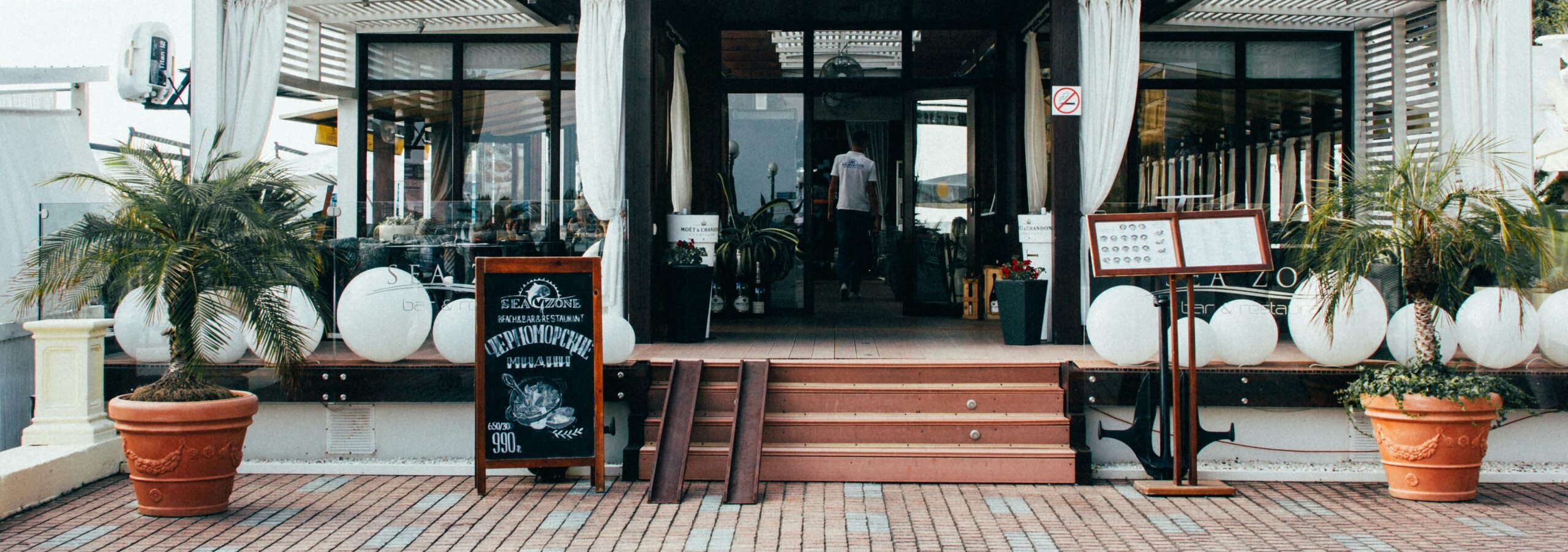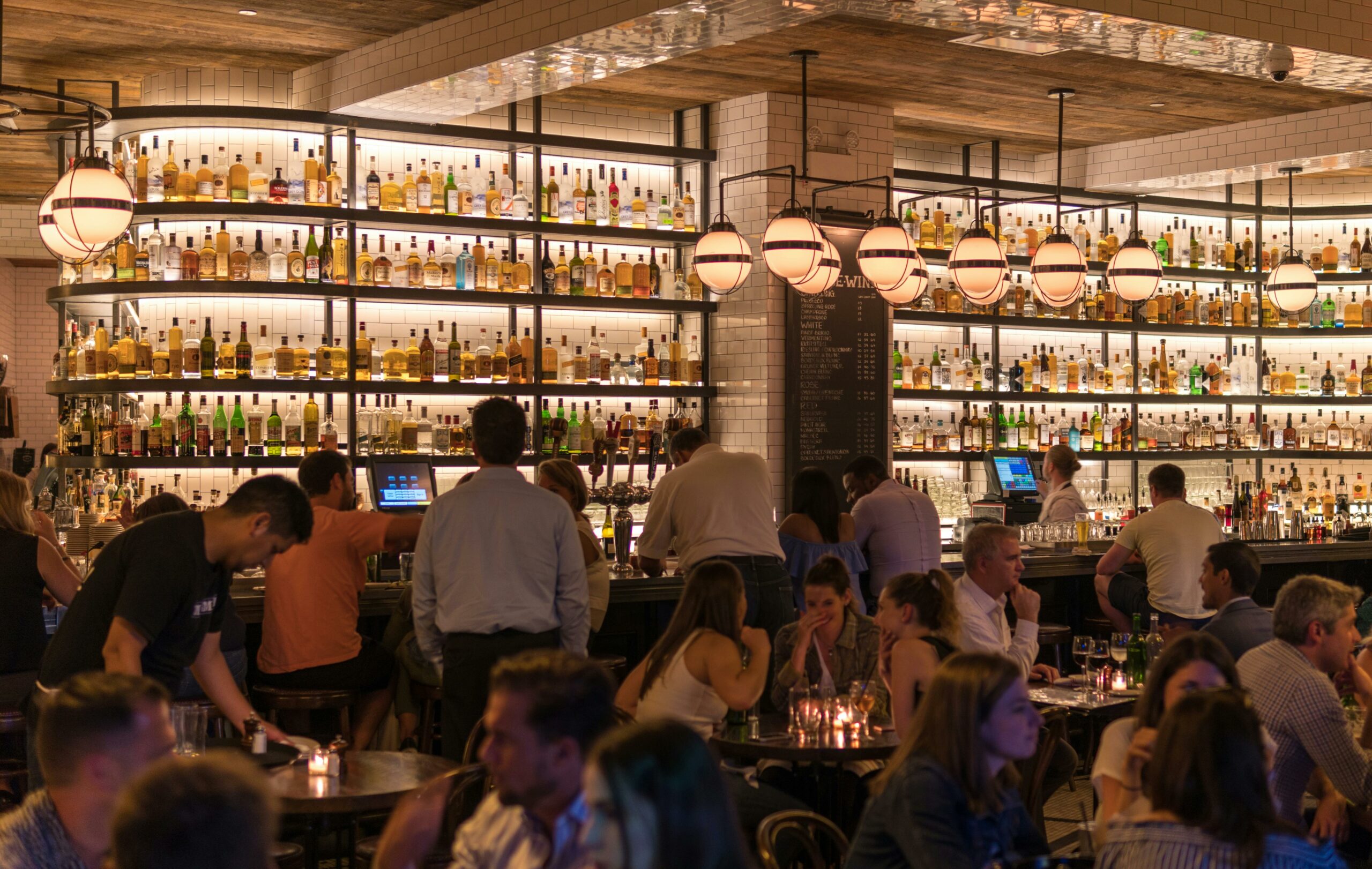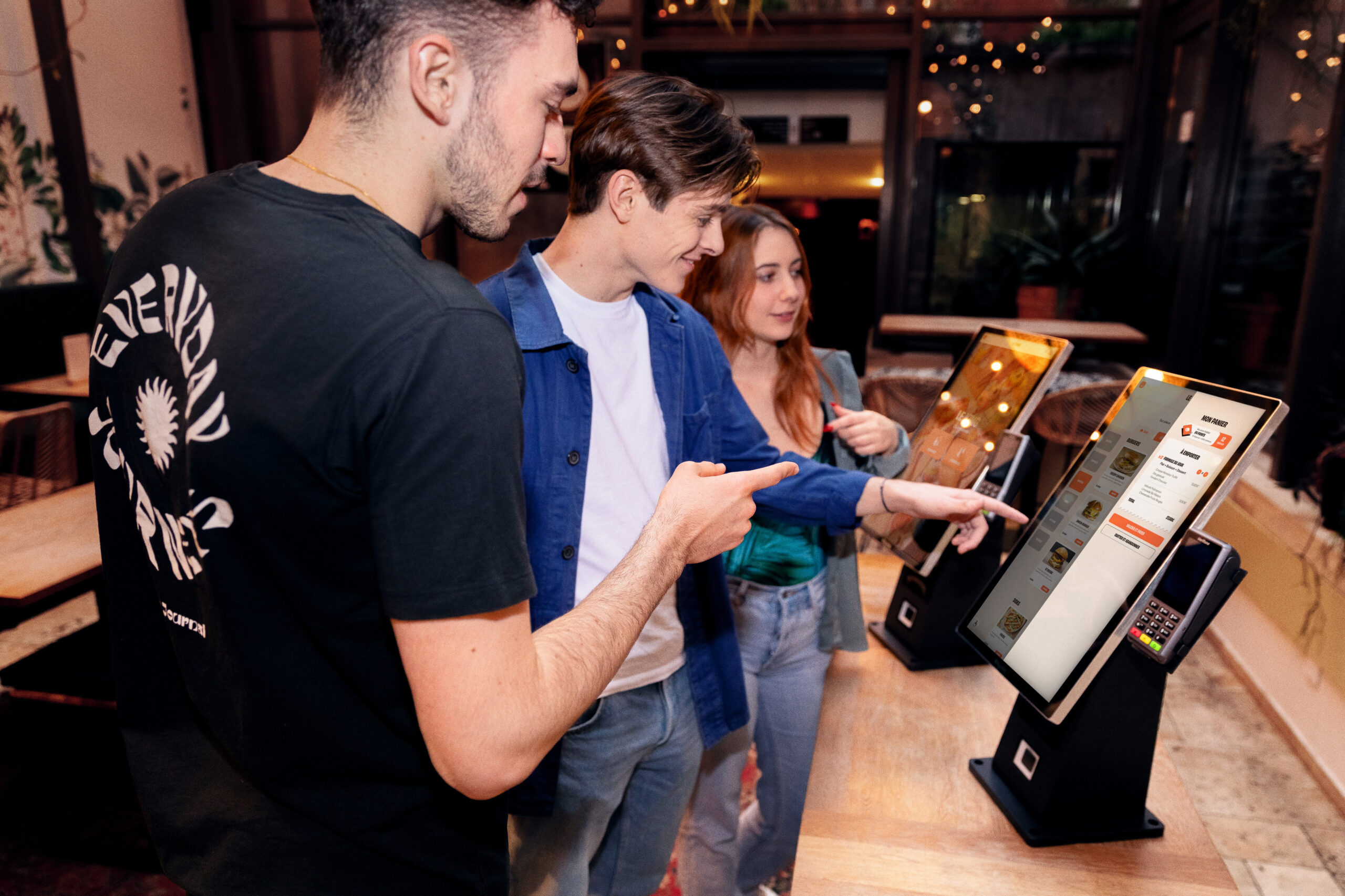Customer data and loyalty: 5 key actions to boost your sales
24 March 2025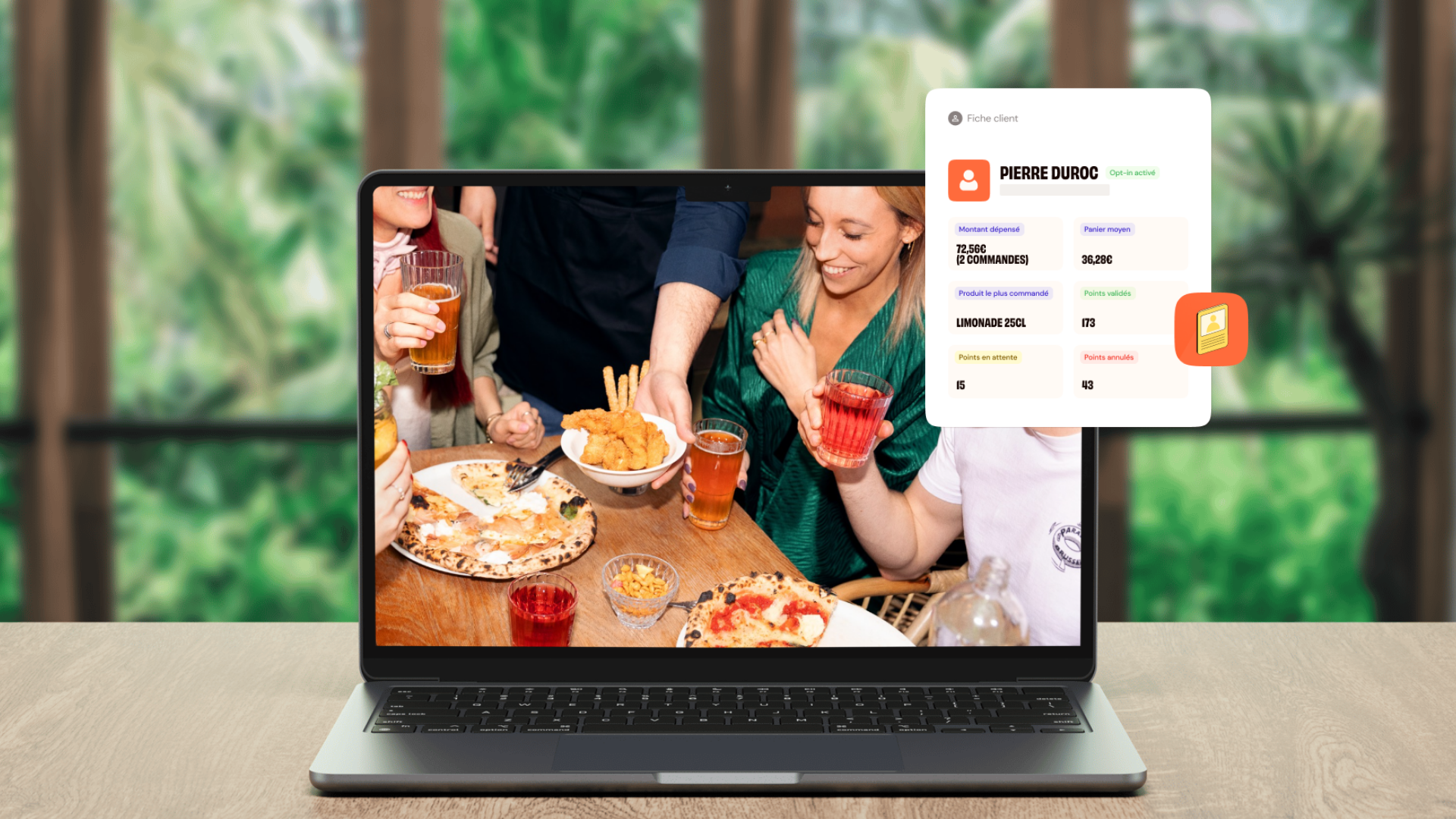
Every day, dozens, even hundreds of customers pass through the door of your restaurant. Some order the same thing over and over again, others try out your new products, some never come back, others become regulars.
But in the end, Do you really know who they are, what they like and what would bring them back?
In a sector where 60 % of sales based on loyal customersUnderstanding your customers is no longer an option, it's a necessity. And yet.., 7 out of 10 customers do not return after a first visit. Lack of attachment? Too generic an offer? Bad timing? More often than not, it's not a question of quality, but of connection.
Major retailers have long understood this: they analyze every order, every review, every average basket to refine their offers and build customer loyalty. But nowadays, you don't need a huge budget to exploit this data. CRM, loyalty programs, order analysis tools... What was once reserved for the chains is now available to all.
It remains to be seen how. What data to collect? What tools should you use? How can you turn this information into concrete actions to boost your visitor numbers and sales? We give you the keys to taking action.
Essential tools for collecting and using data
Customer data is only valuable if it is well organized and used intelligently. For that, you need the right tools.
A simple Excel file isn't enough: you need a solution that centralizes information, segments your customers and helps you activate the right levers. Here are the essentials.
1. A CRM: essential for structuring and exploiting your customer data
What's it for?
A CRM (Customer Relationship Management) is a platform that centralizes all customer data, enabling it to be used strategically. It doesn't just store contacts, it helps you segment your customer base and automate your marketing actions..
Key features of a good CRM for restaurateurs
✔ Centralized database frequency of visits, average shopping basket, order history, preferences... everything is stored and updated automatically.
✔ Advanced customer segmentation Create groups (regulars, VIP customers, occasional customers, inactive customers, etc.) for targeted actions.
✔ Marketing automation Send personalized SMS or email messages based on customer habits (reminders after X days, anniversary offers, targeted promotions).
✔ Performance monitoring Analysis of loyalty campaigns and adjustment of offers according to results.
If your aim is to send personalized offers to your customers and automate your marketing follow-ups, a CRM is essential.
2. A loyalty program: boost recurrence without sacrificing margins
What's it for?
A digital loyalty program allows you to encourage your customers to return regularly, without having to offer them systematic discounts. It also collects valuable data on their habits and preferences.
Key features of a good loyalty program
✔ Points or rewards system : accumulate benefits with every visit, with offers tailored to each customer.
✔ Reward customization offer gifts or discounts based on habits (e.g. a free coffee after 5 brunches).
✔ Dematerialized loyalty cards Accessible via a mobile app or a QR code on the note.
✔ Synchronization with CRM and cash register to track purchases and activate offers automatically.
If your challenge is to encourage customers to return without undercutting your prices, a well-structured loyalty program is a formidable tool.
3. Dashboards to monitor your performance
What's it for?
If you don't measure the impact of your actions, it's hard to know what's really working. A good analytical dashboard gives you a clear view of your business and enables you to adjust your strategies accordingly.
Key data to track on a dashboard
✔ Sales trends Which dishes sell best when?
✔ Attendance evolution of the number of customers per day, week or month.
✔ Impact of offers and promos How many customers used a coupon or special offer?
✔ Customer retention rate How many return after a first visit?
If you want to manage your restaurant with precision and optimize your offers, an analytical dashboard is essential.
01. Collect the right data without wasting time
Customer data is a goldmine for improving experience, increasing loyalty and optimizing your offers. But you still need to know where to find it, and which data is really useful.
Where can you find this data?
They're already there: every order, every payment, every interaction with your customers leaves an exploitable trace.
➜ Cash register software : it records all orders placed, amounts spent, peak periods and consumer trends. An effective way of identifying the most popular dishes and off-peak times.
➜ Loyalty program : It tracks the frequency of visits, the average ticket, the offers used and identifies regular customers or those who drop out.
➜ Customer reviews : Google, social networks, specialized platforms... Customer feedback gives you valuable information on what customers like and what needs to be improved.
All this data is already available to you. The challenge is to structure it and use it intelligently.
What data is really useful?
The aim is to identify those that will enable you to better understand your customers and adapt your offer.
➜ Order history : know which dishes a customer orders most often, how much they spend on average, and how often they return.
➜ Preferences and habits : find out when they come and go, the type of food they eat (takeaway, on-site, delivery) and the offers they use.
➜ Customer reviews and feedback : monitor notes left online and identify recurring areas for improvement.
With this information, you can personalize your offers, improve your service and retain your customers more effectively.
Collecting data: yes, but in the right way
Gathering information about your customers is useful. But be careful: in France, the RGPD (General Data Protection Regulation) imposes a strict framework.
➜ Mandatory consent : if you collect personal data (e-mail, telephone number), the customer must give his or her explicit consent.
➜ Transparent use : inform your customers of the use you make of their data (display in restaurant, mention on website).
➜ Secure storage : data must be protected and accessible only to authorized persons.
➜ Right to be forgotten : a customer can ask for their information to be deleted. You need to be able to do this quickly.
Failure to comply can result in severe penalties: up to 4 % of sales or 20 million euros fine for the most serious offences. So it's best to do things properly, with a reliable, reputable supplier.
"Collecting data is only useful if it's used properly. And that starts with respecting the legal framework to avoid unpleasant surprises."Things to remember
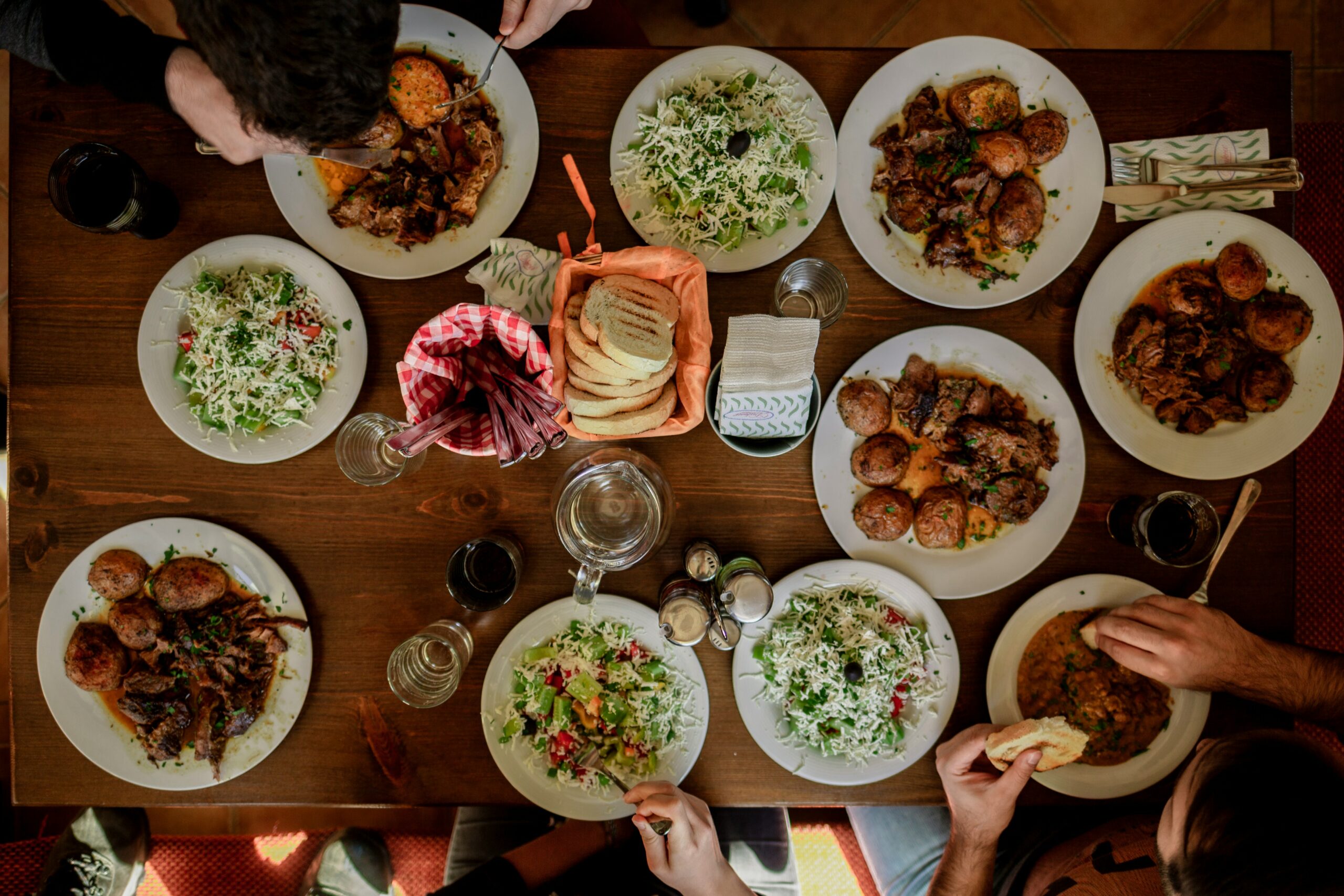
02. Personalizing the customer experience with data
Customers like to be taken care of. A tailor-made experience encourages them to come back, spend more and tell others about your restaurant. And for this, data is your best ally.
Recommending the right dishes at the right time
Thanks to order history, you can anticipate your customers' desires. A regular orders the same dish over and over again? Why not offer him a discount on his next visit, so he can try it in an XL version or with a free side dish? A customer only comes back for Sunday brunch? An SMS reminder with a special offer can encourage them to come during the week too.
Intelligently relaunching inactive customers
A customer hasn't ordered in several weeks? Instead of sending a generic promo, offer them a benefit based on their preferences A free aperitif on his favorite drink, a discount on the dish he orders most often.
The result: more relevant communication and a much greater chance of bringing them back.
Create a truly engaging loyalty program
Points accumulated with each purchase are great. But if you take personalization a step further, the impact is even greater. Example: A customer often brings his family? Offer a children's menu after X visits. Does he often order a burger but never dessert? A discount on a dessert may encourage him to change his habits.
Adapt your menu to customer preferences
By analyzing recurring orders, you can identify star dishes and those that perform less well. Vou can also adjust your offer to suit local preferences. A seaside restaurant might see fish dishes explode in summer, while an urban establishment might see a rise in sales of bowls and vegetarian dishes. These trends can be used to refine the offer and avoid strategic errors on the map.
"Personalizing the customer experience doesn't require a colossal effort, just good use of the data already available. The more relevant your recommendations and offers, the more your restaurant becomes a place where customers feel understood... and return."Things to remember
03. Segment your customers for more effective marketing campaigns
Sending the same offer to everyone wastes resources. Some customers will catch on, others will completely ignore your message. By segmenting your database, you can tailor your offers to each profile, which increases the chances of turning a simple mailing into a real checkout.
Identify customer profiles
Not all customers are alike, and neither are their expectations. Here are a few common segments:
➜ Regulars: they come back regularly and have their own favorite dishes. An attractive loyalty program can encourage them to come back even more often.
➜ Casuals: they pass by from time to time, without any real attachment. A well-targeted offer can win their loyalty.
➜ VIPs: These are the customers who generate the most sales. Offering them exclusive benefits can strengthen their commitment.
➜ Inactive customers : they haven't been back for a while. A personalized reminder with an adapted offer can bring them back.
Send offers tailored to each segment
Once the profiles have been defined, all that's left to do is adapt your communication:
➜ For regulars: a reward after X visits, an offer on their favorite dish, priority access to new products.
➜ For casuals: a promotion to encourage them to come back sooner, a suggestion of new dishes based on their past choices.
➜ For VIPs: invitations to private events, special status with exclusive benefits.
➜ For inactive customers: a personalized message like "We haven't seen you in a while... Your favorite burger is waiting for you with a surprise!"
"Segmenting means talking to each customer as if they were unique, instead of churning out promotions. With the right tools (CRM, loyalty program), you can automate these campaigns and turn each mailing into a sales opportunity."Things to remember
Want to find out more? Consult our resource "Segmenting your database: the cornerstone of customer loyalty"
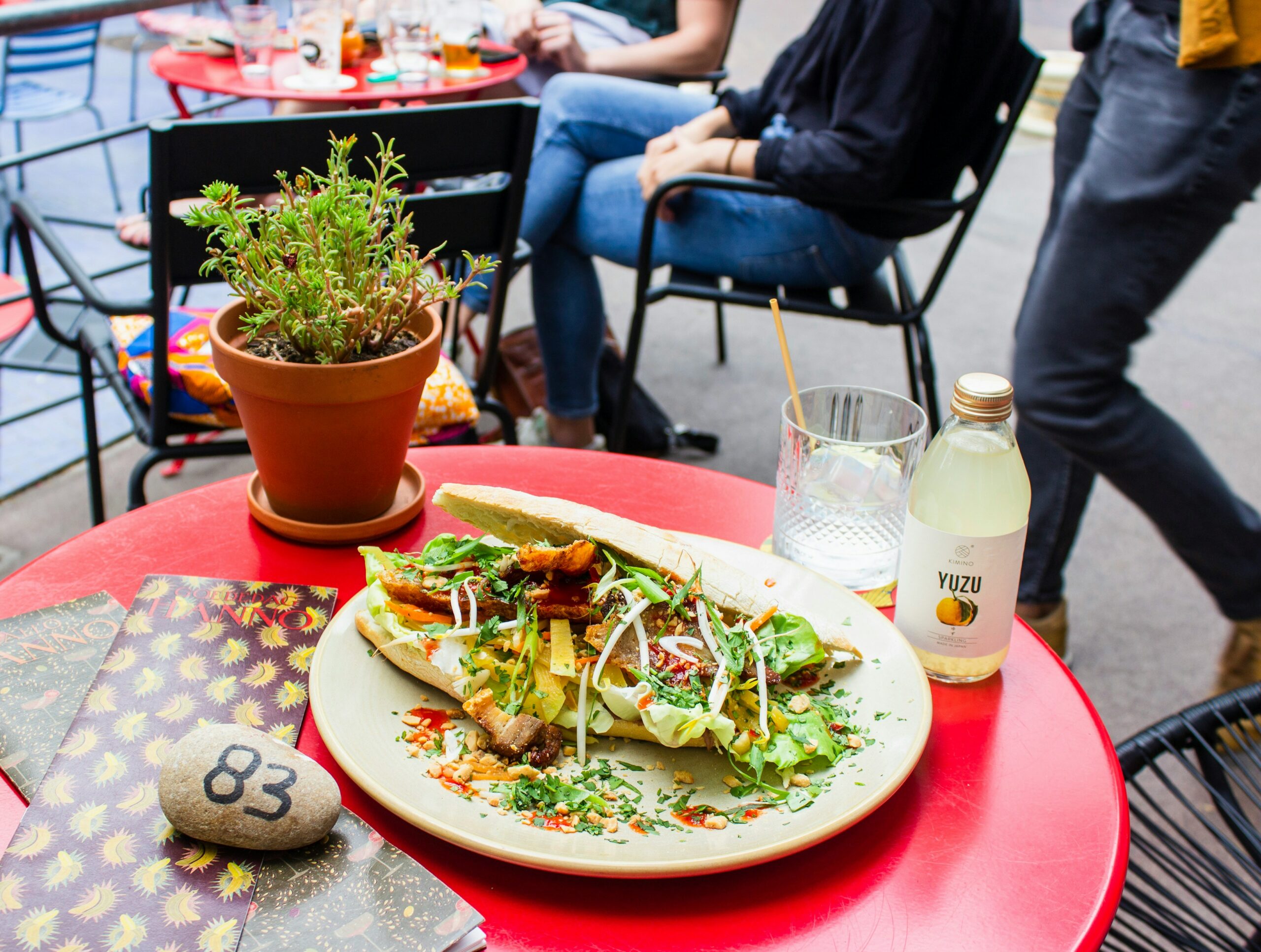
04. Boost sales with intelligent offers
A poorly targeted reduction is a waste of money. A well thought-out offer means more customers in your restaurant, and a higher average bill. The secret? Use data to propose offers that really speak to your customers.
Rewarding loyalty without selling off the menu
Regular customers deserve a little extra, but there's no need to give everything away for free. Instead of a simple -10 %, test strategic rewards:
➜ One free drink on an order after 5 visits
➜ A promo on a never-tried dish to encourage discovery
➜ A bonus for customers who refer a friend
The aim: to encourage them to come back more often without cutting into your margins.
Encouraging customers to spend more
Well-placed offers increase the average basket without forcing the hand.
Here are a few examples:
➜ "Add a starter for €2 more" when a customer orders a dish alone
➜ "A duo menu at a reduced price" to entice customers to come accompanied
➜ "A free dessert from €30 purchase" to boost the final score
An approach that works equally well in theatres and on delivery.
Bring back inactive customers with targeted reminders
A customer hasn't ordered in a month? Instead of sending them a standard promotion, adapt your message:
➜ "We haven't seen you in a while... and neither has your favorite dish! There's an offer waiting for you."
➜ A discount on his usual day to get him back into his routine
➜ An invitation to a special event (new card, themed evening)
The result: more effective campaigns and a real return on investment.
"Promos and perks don't have to be handed out haphazardly. By analyzing your data, you can create offers that please your customers while serving your objectives: increasing footfall, improving average basket and bringing back lost customers."Things to remember
05. Start with a simple action today
Customer data may seem complex to exploit, but you don't need a 5-year plan to reap the benefits. Start with a simple, concrete action that will give you quick results.
Identify the data already available
Look at what you have on hand:
➜ Your cash register software : what are the sales trends? Which dishes sell best?
➜ Your loyalty program : who are your regular customers? What are their favorite dishes?
➜ Customer reviews : are there any recurring areas for improvement?
A quick glance at this data will give you some ideas for optimization.
Launch an initial targeted action
Instead of trying to analyze everything at once, test a simple action based on your data:
➜ Revive inactive customers with a personalized offer on their favorite dish.
➜ Test a targeted promotion for a specific customer segment (e.g. a special offer for those who always order lunch).
➜ Optimize your loyalty program by adding a more engaging reward (e.g. a gift after 5 visits).
Measure and adjust
Don't stop at just one action.
Look at the impact:
➜ Have you had more orders or restaurant visits?
➜ Have customers reacted positively to your offer?
➜ Has the offer increased the average basket or visit frequency?
If so, continue in this direction. If not, adjust and test another approach.
"Leveraging customer data isn't about analyzing everything at once, but moving forward in stages. Start small, observe the results and adjust. A good strategy isn't built in a day, but every well-thought-out action brings you closer to a more successful restaurant."Things to remember
Need a helping hand to get started?
Whether you're looking to choose the right CRM or to structure your first marketing campaigns, our team is here to support you.
➜ Find out how Auguste & Ferdinand used customer data to improve experience and retention.
Would you like to do the same? Contact us and we'll help you choose the right tools and implement the first actions.








